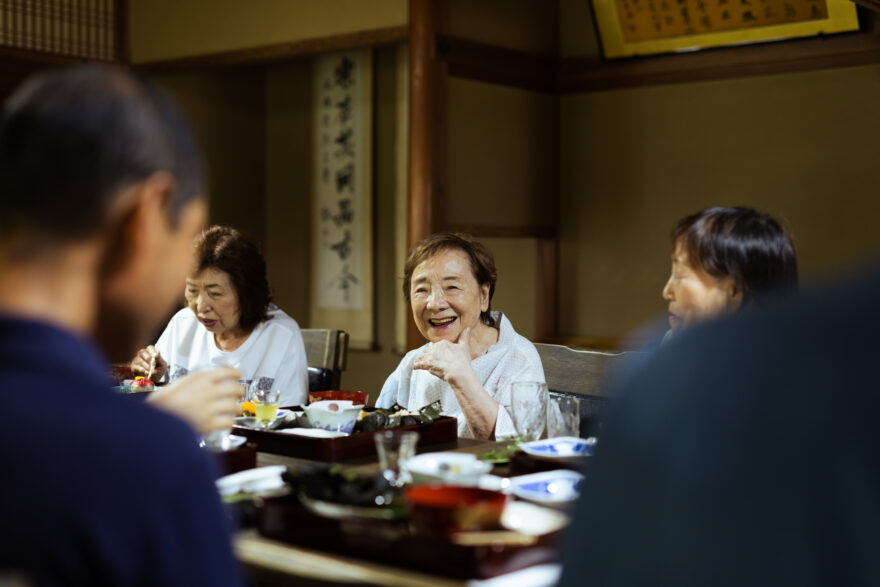Chef in Residence
Chef in Residence (Part 3)
On Friday, September 16th, the final day of the Chef in Residence Program, an unveiling lunch at the former Ouchi Residence was held. Vegetables purchased from the farmers and seasonings mainly from Tachibana-machi were used. Local residents who took care of the group during the program attended as guests.
Ms. Aoyagi and Ms. Oyama of élab worked late into the night the day before the event and from early in the morning on the day of to prepare food for the 16 guests.
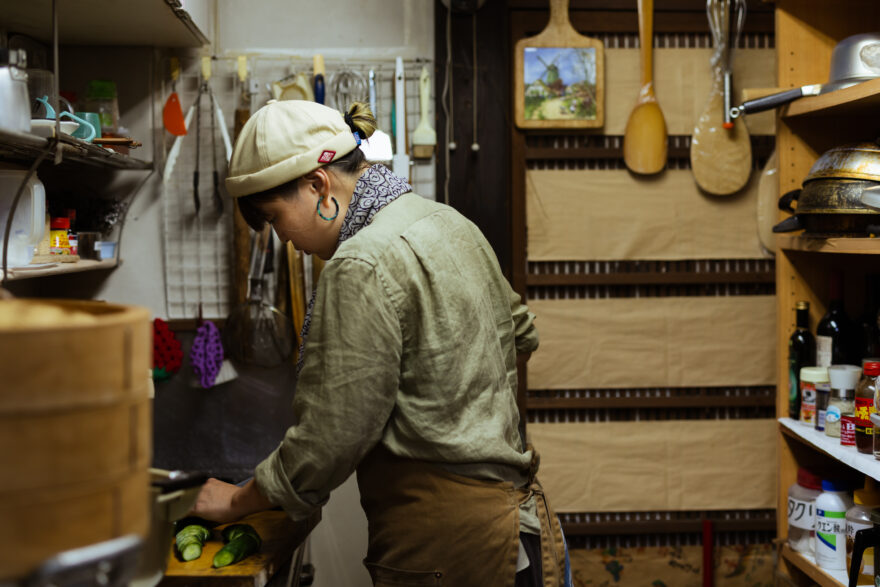
Conversations with members of the former Ouchi Residence Culinary Study Group also inspired the making of inari sushi (vinegared rice wrapped inside sweet and salty fried tofu skins).
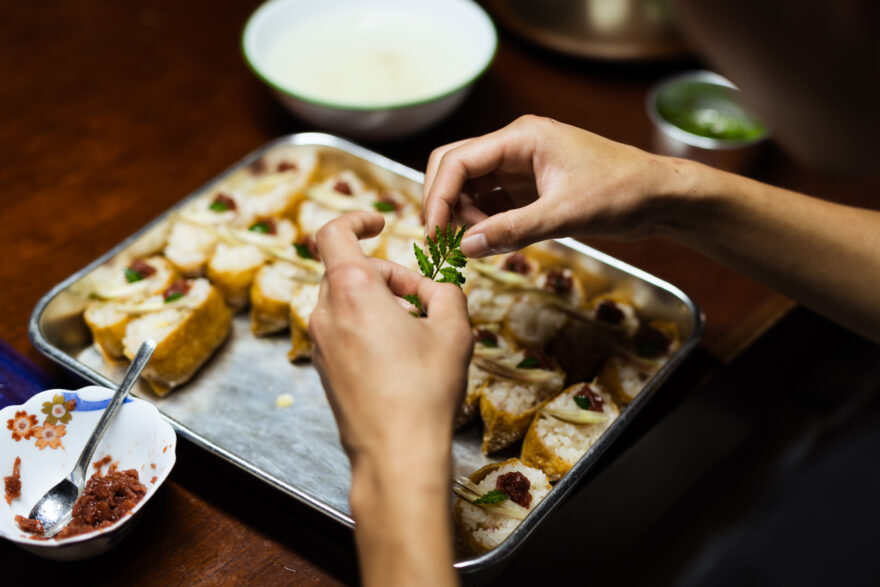
The entrance hall to the former Ouchi Residence was opened to create a special atmosphere, particularly for the event and the guests in attendance came dressed up.
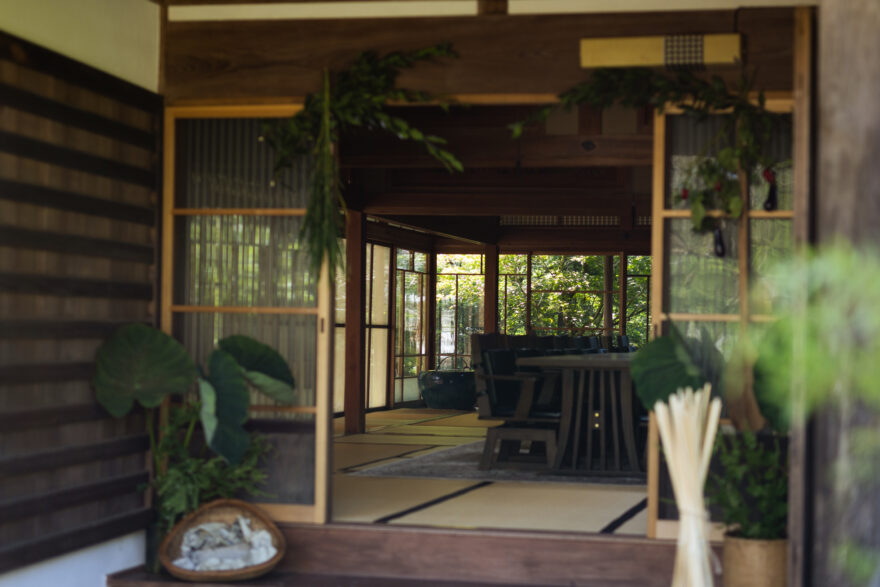
The menu consisted of Shiraki soup, marinated goya (bitter melon), steamed eggplant, pickled konjac and taro in salted rice bran, mulberry leaf sushi, inari sushi, pickles, konjac sashimi, tengusa seaweed tokoroten, tomato water, and persimmon vinegar soda with fresh ginger. The dishes were served on trays and tableware that had been cherished and used in the former Ouchi Residence.
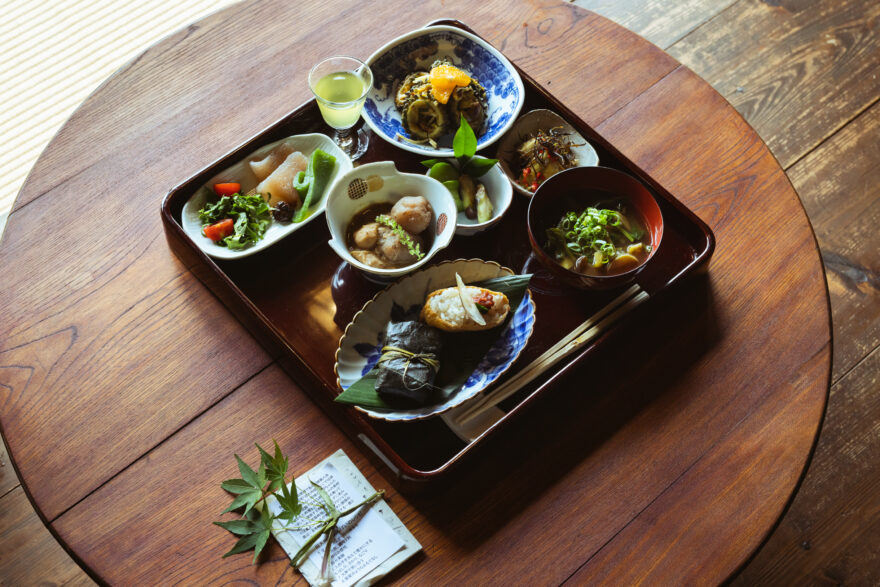
Ms. Aoyagi explained the dishes to the local residents who enjoyed the unique flavors of the otherwise familiar Tachibana-machi ingredients. The meal was eaten with much enthusiasm.
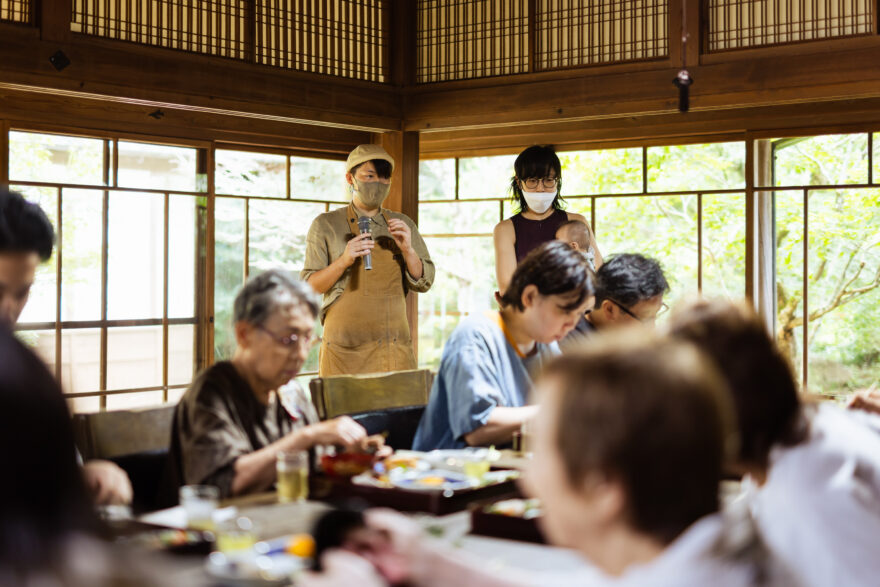
In addition to the prepared dishes, Ms. Aoyagi and Ms. Oyama shared about the food and farming activities they had participated in during their stay in Tachibana-machi. They also created “Anbai Recipe” a summary of the insights they gathered during the program.
The former Ouchi Residence’s “Anbai” Recipe:
- Everything starts with local connections.
- Vegetables are 80%, while cooking is the remaining 20%.
- Handcraft dishes with sensitivity and creativity.
- Experiment every day.
- Enrich by adding a human touch.
- The cycle of harvest, bloom, and end, continues.
- Laugh out loud.
- Offer hospitality like that of a family home.
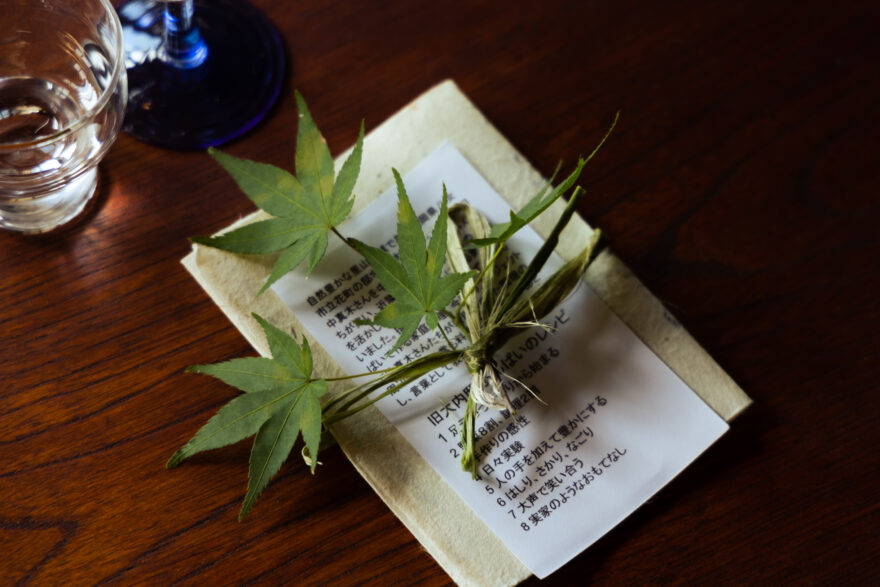
Ms. Maki Tanaka, who has carefully nurtured the culinary culture of the former Ouchi Residence also shared a warm message. She was pleased to see that her approach to cooking, which she has valued for many years, has transcended generations and regions and is reflected in the cooking of Chef Aoyagi.
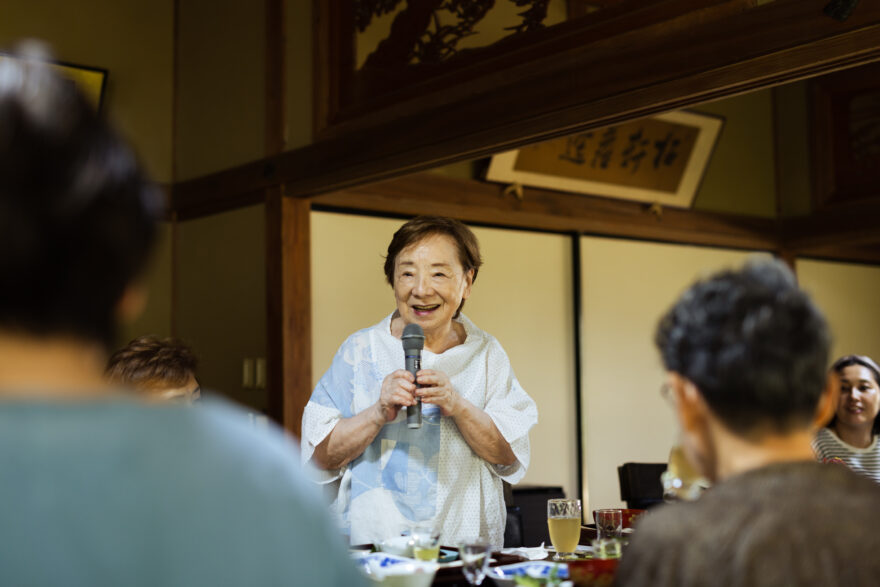
To everyone’s surprise, Ms. Tanaka had also prepared a beautiful camellia sushi topped with bright red camellia petals just for the event. Camellia sushi, which is also featured in Ms. Tanaka’s book, “Anbai no Shokutaku,” is a dish that symbolizes her style of cooking. By quickly boiling the camellia petals and soaking them in white plum vinegar, their color can be preserved as if they were still in bloom, even in the summer.
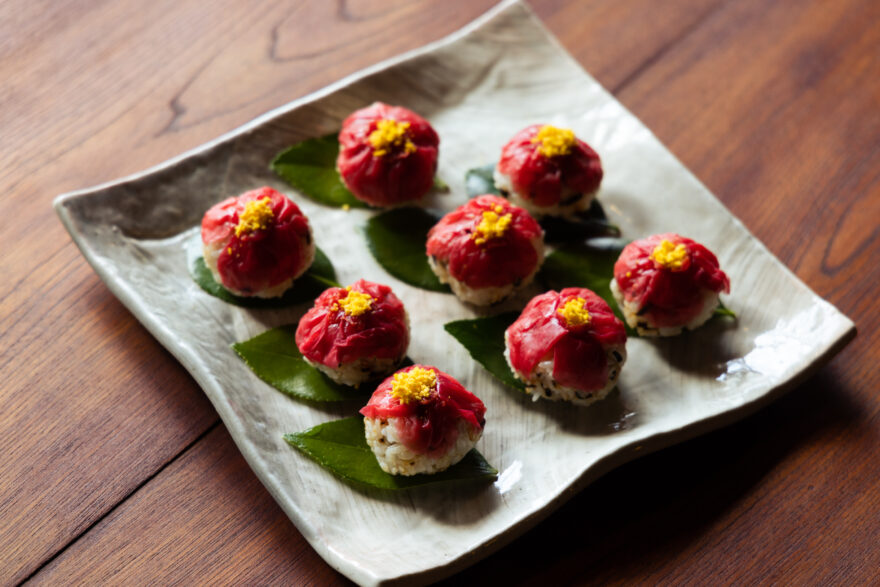
To finish off the meal, agar jelly with tengusa seaweed, a dish learned from Ms. Tanaka, was served. The black sugar syrup was flavored with rosemary from Ms. Tanaka’s garden which gave the dish a slightly different taste than usual.
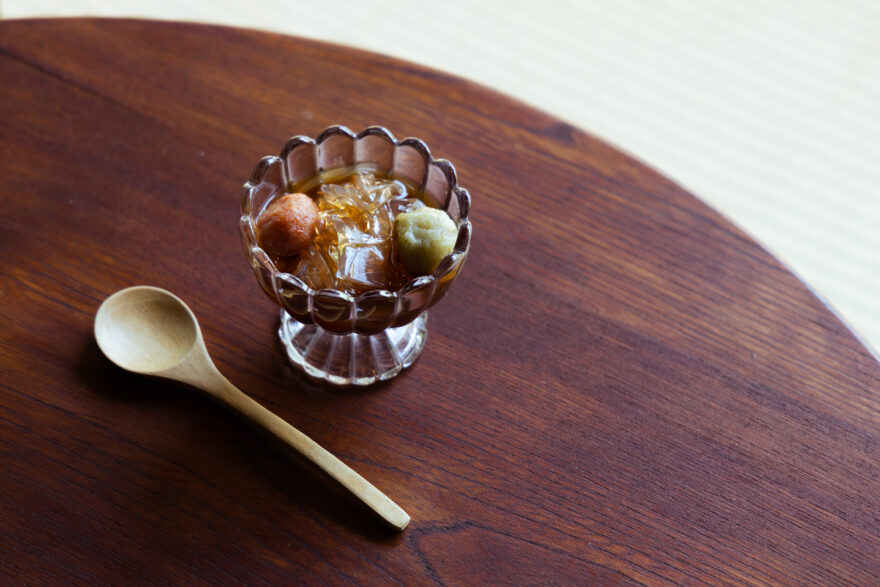
The culinary culture and wisdom about the way of living that has been cultivated in Tachibana-machi cannot be preserved like physical objects and may disappear if not passed down to future generations.
It doesn’t necessarily have to be the “locals” who carry on this tradition. Rather, by involving the perspectives of “outsiders”, the local culture can continue to be inherited and developed – just as the former Ouchi Residence has developed into a center for exchange within Asia.
The Chef in Residence program started with this vision in mind and concluded with smiles on the faces of all who participated.
